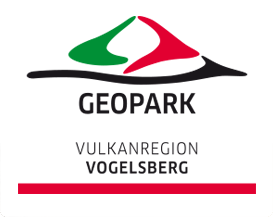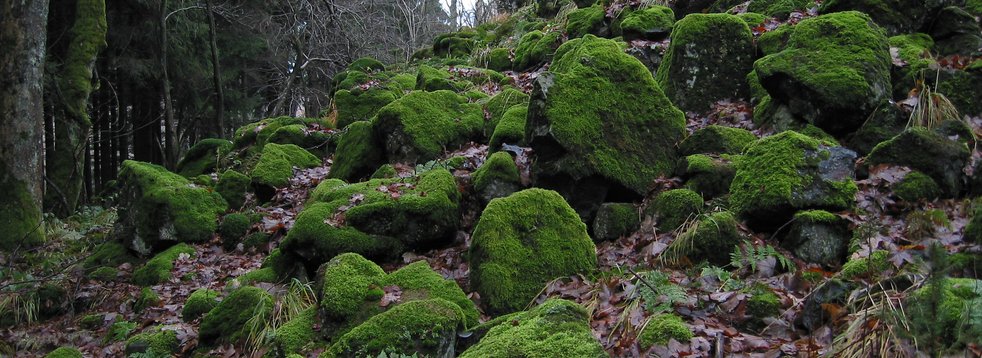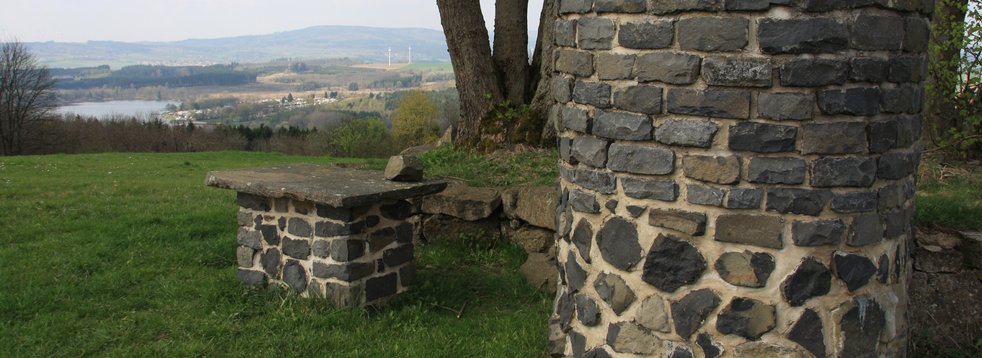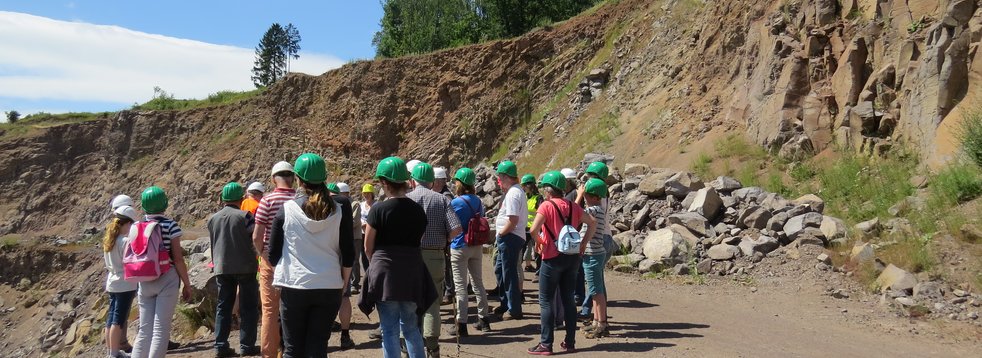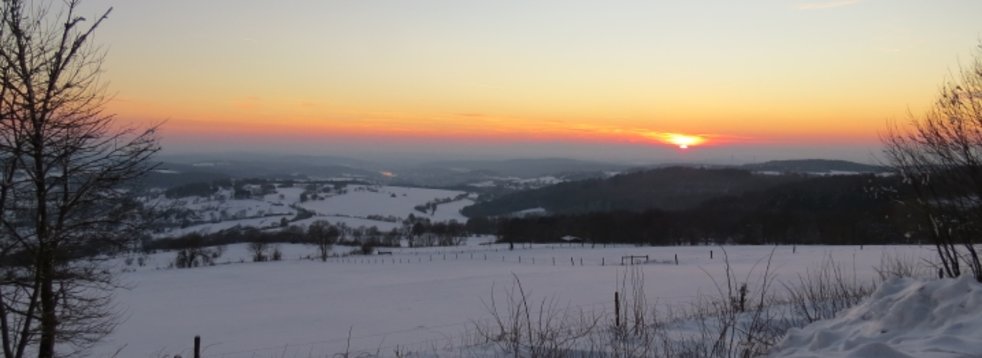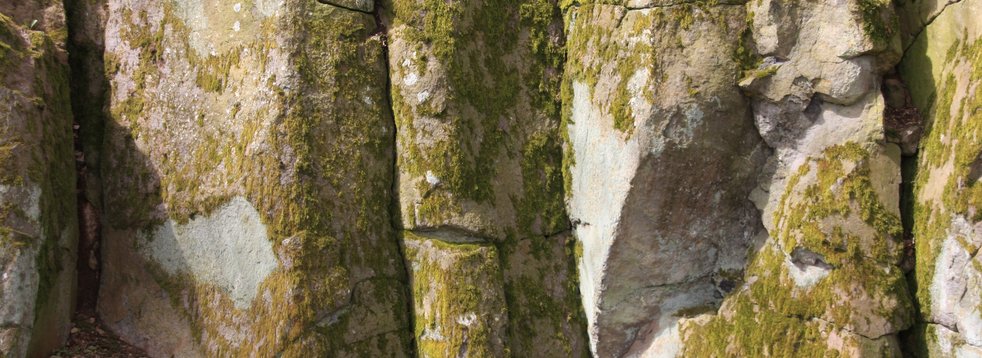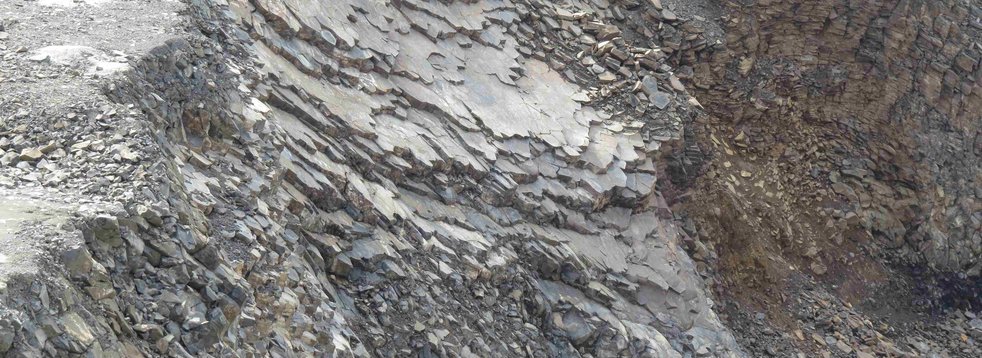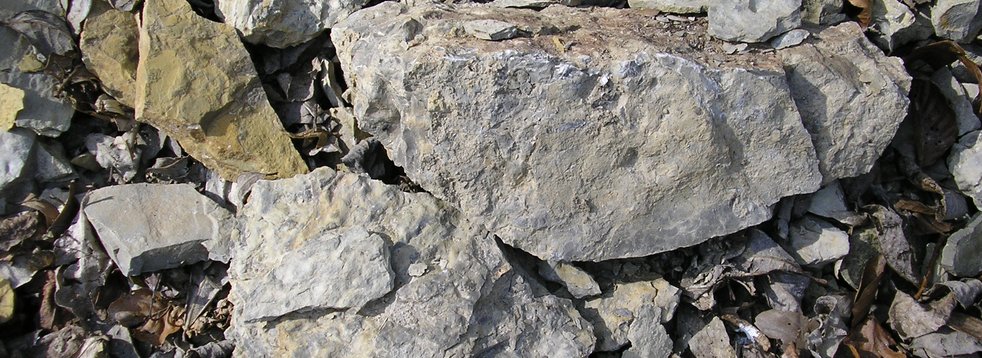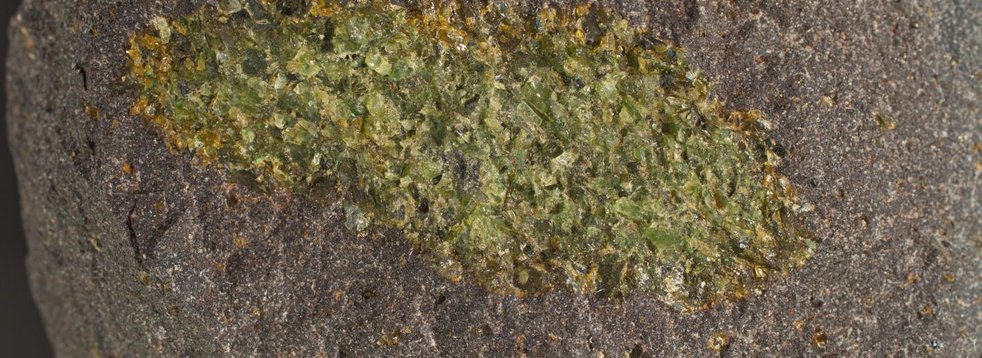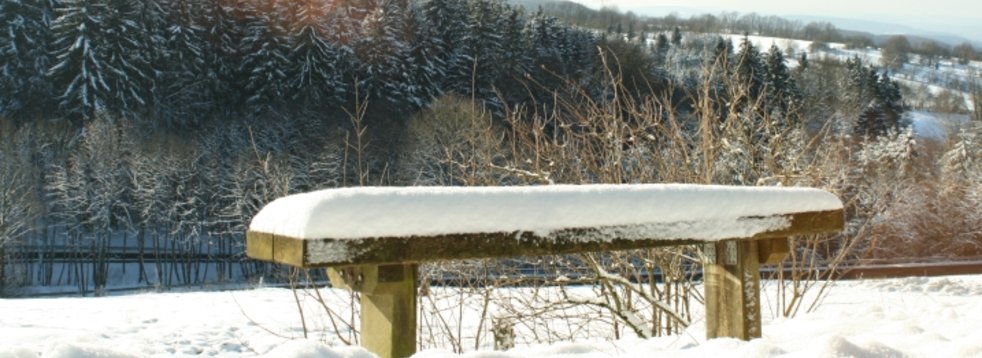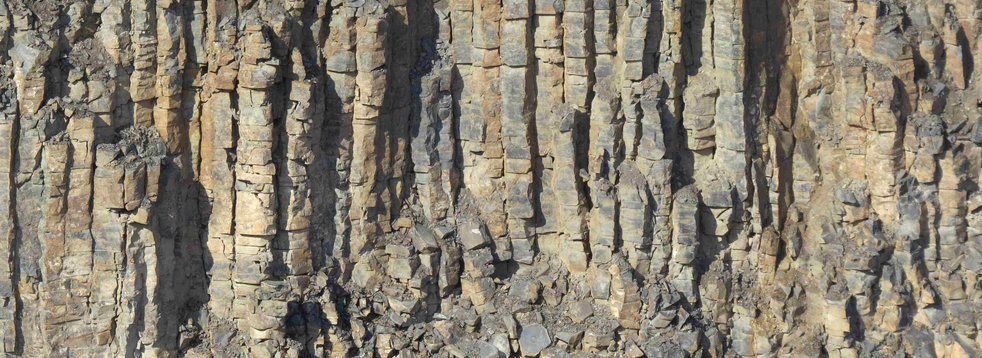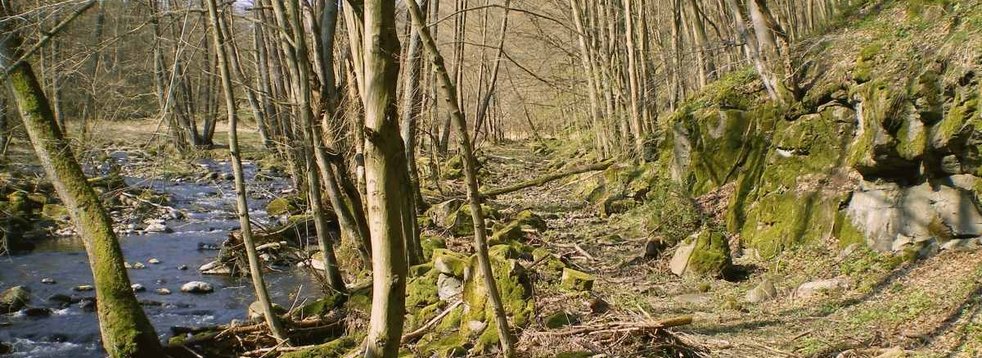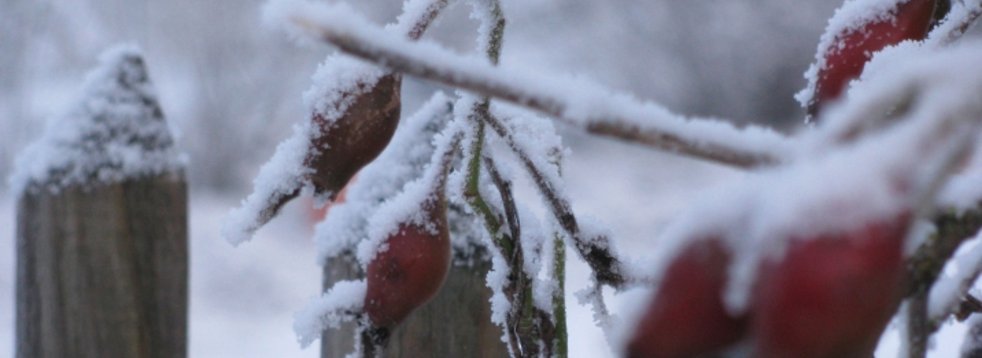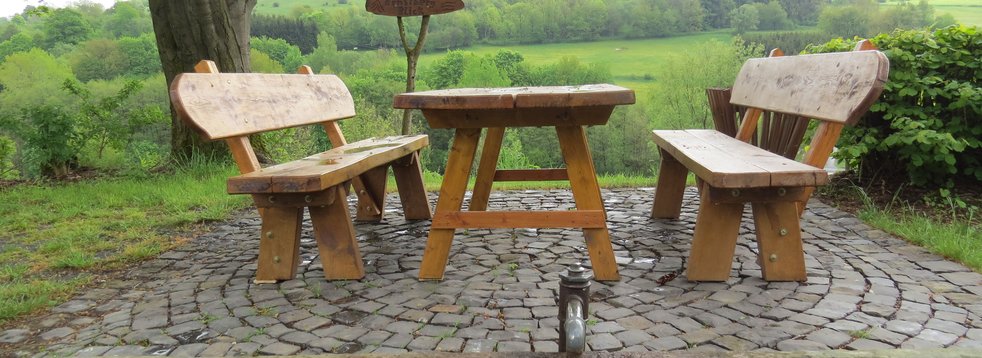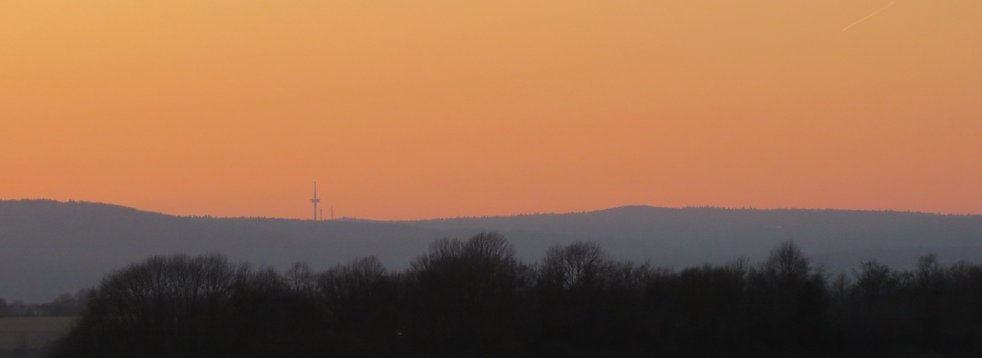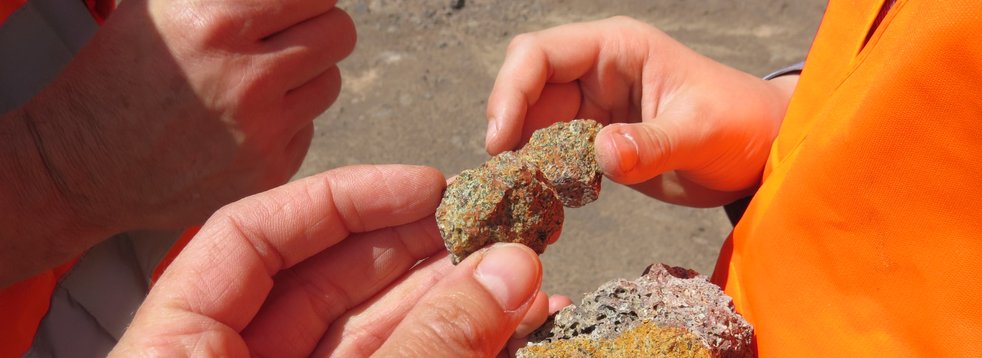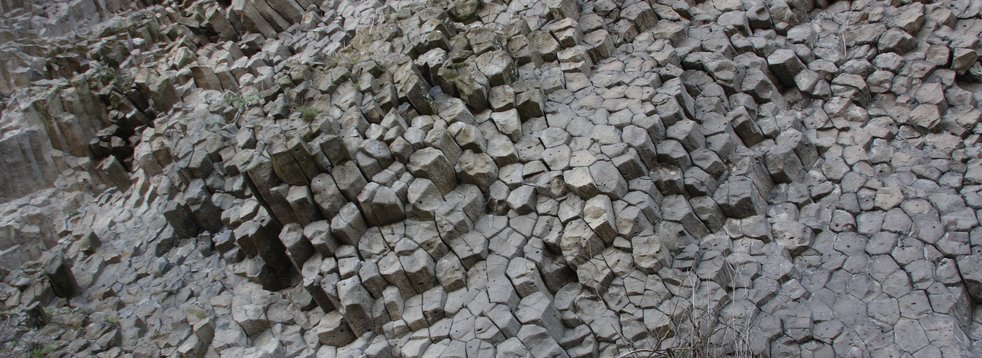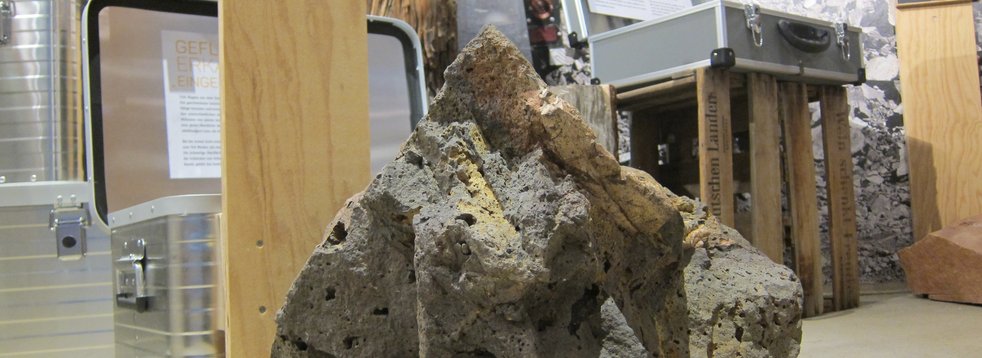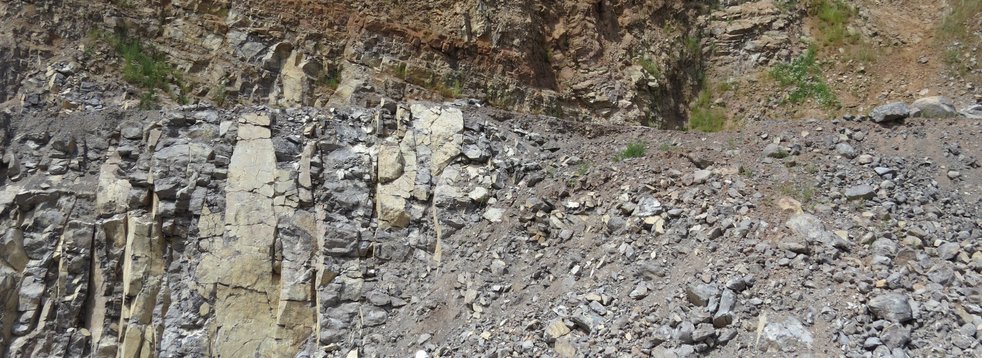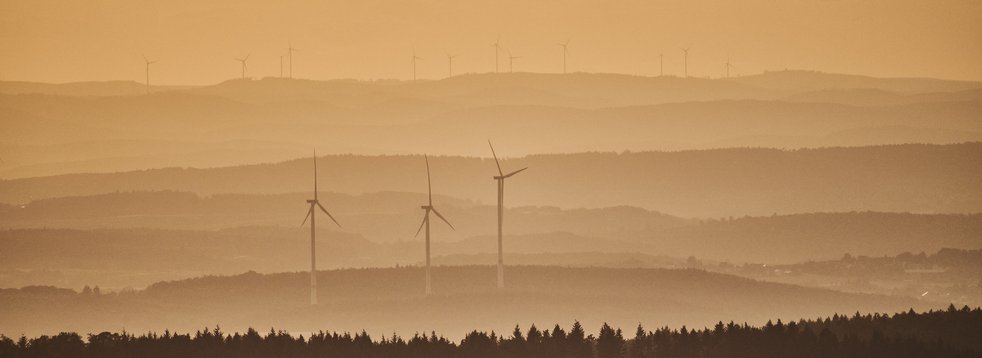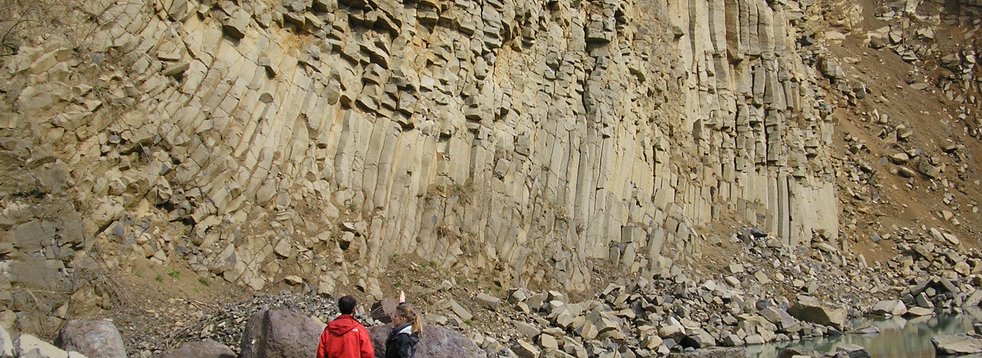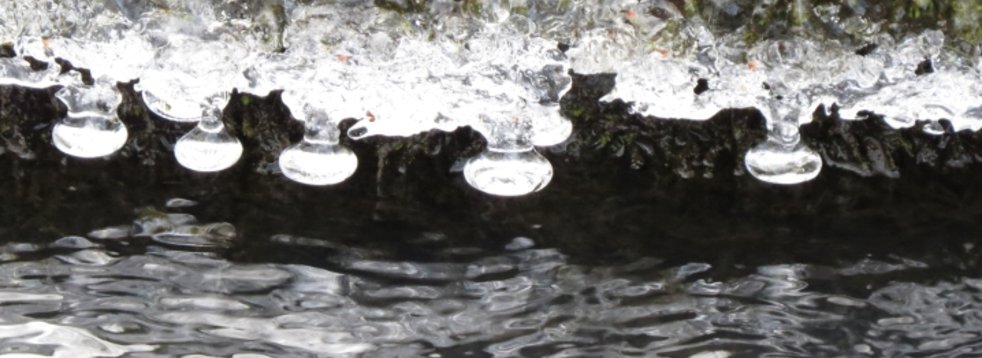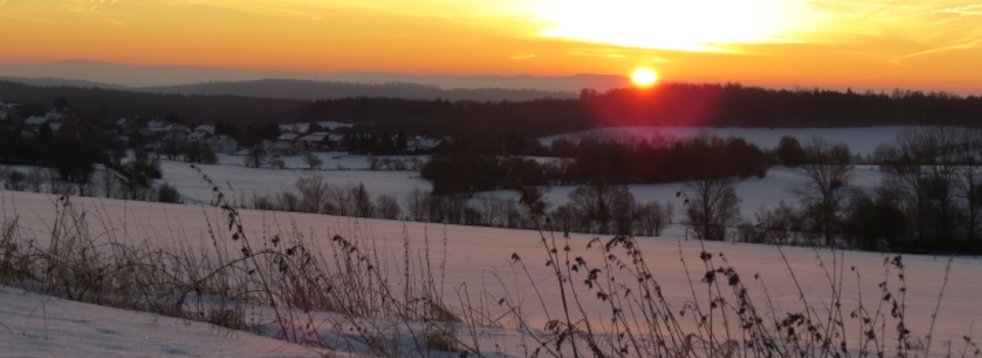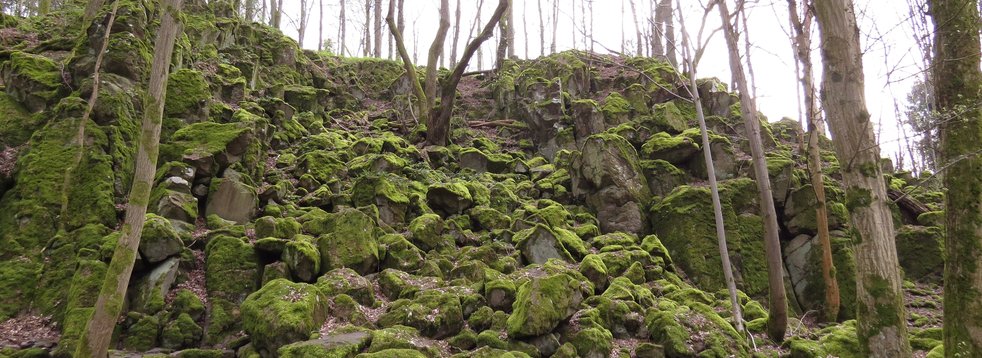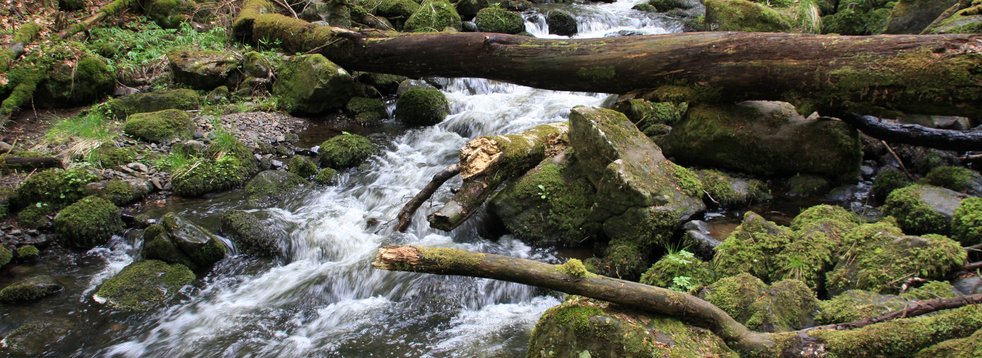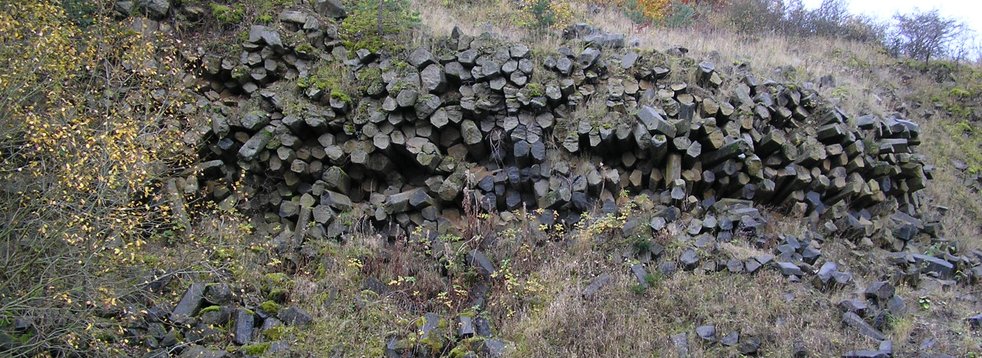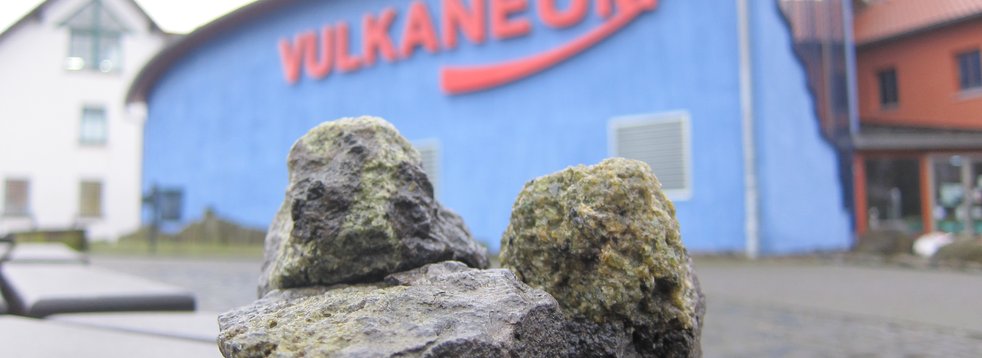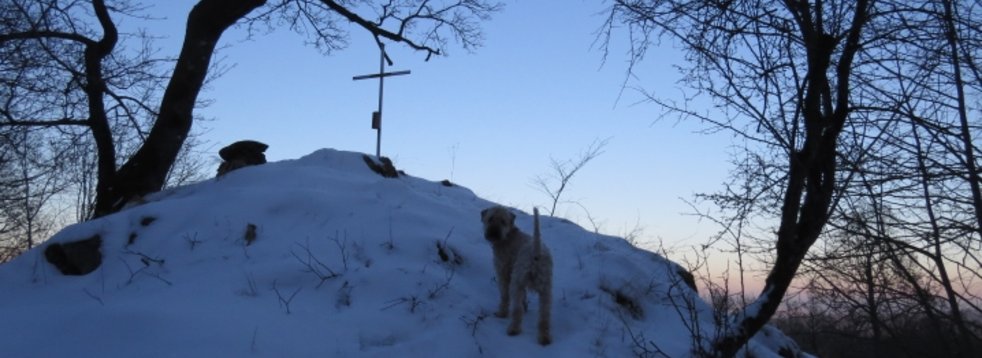Geotope Alteburgskopf near Schotten

The volcanic rocks of the geotope and natural monument Alteburgskopf near Schotten are rich in alkalis, which is why it is called alkali basalt. Due to the weathering of the relatively high feldspar content, the rock often appears light compared to other basalts.
If basaltic lava cools, it loses volume. This causes tensions within the rock. These are reduced by the formation of cracks, which ultimately leads to the formation of columns. The ends of the columns point to the former cooling direction: in a lava flow towards the cooler lower and upper side.
Columns are also visible at the geotope Alteburgskopf. Due to the power of erosion, the edge areas of the former lava flow were crushed and relocated. This is indicated by the block field around the geotope.
Literature
- Ehrenberg, K.-H. & Hickethier, H. (1985). Die Basaltbasis im Vogelsberg. Schollenbau und Hinweise zur Entwicklung der vulkanischen Abfolge. Geol. Jb. Hessen (113), 97–135.
Reischmann, T. & Schraft, A. (2009). Der Vogelsberg: Geotope im größten Vulkangebiet Mitteleuropas. Hessisches Landesamt für Naturschutz, Umwelt und Geologie. Wiesbaden.

